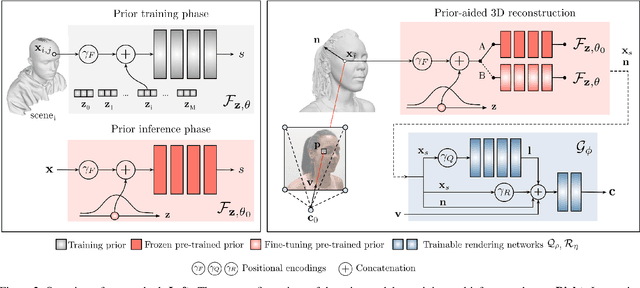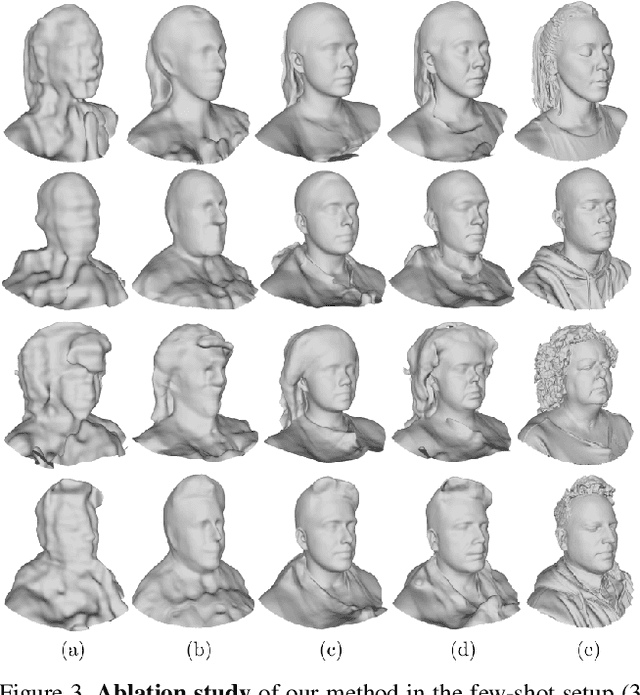Janna Escur
H3D-Net: Few-Shot High-Fidelity 3D Head Reconstruction
Jul 26, 2021



Abstract:Recent learning approaches that implicitly represent surface geometry using coordinate-based neural representations have shown impressive results in the problem of multi-view 3D reconstruction. The effectiveness of these techniques is, however, subject to the availability of a large number (several tens) of input views of the scene, and computationally demanding optimizations. In this paper, we tackle these limitations for the specific problem of few-shot full 3D head reconstruction, by endowing coordinate-based representations with a probabilistic shape prior that enables faster convergence and better generalization when using few input images (down to three). First, we learn a shape model of 3D heads from thousands of incomplete raw scans using implicit representations. At test time, we jointly overfit two coordinate-based neural networks to the scene, one modeling the geometry and another estimating the surface radiance, using implicit differentiable rendering. We devise a two-stage optimization strategy in which the learned prior is used to initialize and constrain the geometry during an initial optimization phase. Then, the prior is unfrozen and fine-tuned to the scene. By doing this, we achieve high-fidelity head reconstructions, including hair and shoulders, and with a high level of detail that consistently outperforms both state-of-the-art 3D Morphable Models methods in the few-shot scenario, and non-parametric methods when large sets of views are available.
Wav2Pix: Speech-conditioned Face Generation using Generative Adversarial Networks
Mar 25, 2019



Abstract:Speech is a rich biometric signal that contains information about the identity, gender and emotional state of the speaker. In this work, we explore its potential to generate face images of a speaker by conditioning a Generative Adversarial Network (GAN) with raw speech input. We propose a deep neural network that is trained from scratch in an end-to-end fashion, generating a face directly from the raw speech waveform without any additional identity information (e.g reference image or one-hot encoding). Our model is trained in a self-supervised approach by exploiting the audio and visual signals naturally aligned in videos. With the purpose of training from video data, we present a novel dataset collected for this work, with high-quality videos of youtubers with notable expressiveness in both the speech and visual signals.
 Add to Chrome
Add to Chrome Add to Firefox
Add to Firefox Add to Edge
Add to Edge